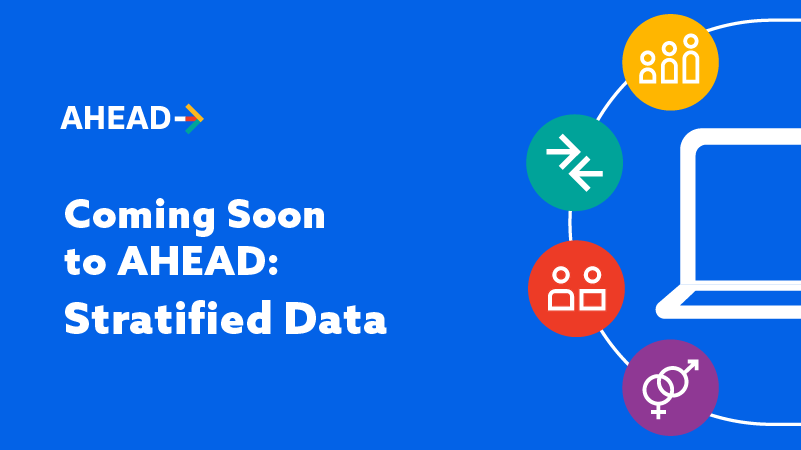Coming Soon to AHEAD: Stratified Data
Topics

America’s HIV Epidemic Analysis Dashboard (AHEAD) will soon release an update that allows users to view some EHE indicator data stratified by age, race/ethnicity, sex at birth, gender, and transmission category at the state and county level.
The ability to take a closer look at HIV data by multiple demographic variables, or stratifications, is central to understanding which communities are experiencing HIV-related health disparities and to empowering public health officials and other stakeholders to act based on the data. Making progress toward ending the HIV epidemic in the U.S. is improved if there is a clear picture of the communities most impacted by HIV and programs, resources and interventions are tailored to effectively reach those communities.
In the summer of 2021, AHEAD will release EHE indicator data that can be stratified 1, 2, or 3 ways nationally, across states, and across counties using standardized data methodologies. It’s important to note that some 1-,2-and 3-way stratifications may not be available at all geographic levels
AHEAD currently displays EHE indicator data at the national level by single demographics, such as race/ethnicity, and by transmission category. This is called 1-way stratification since data can be viewed by only one factor at a time. With this upcoming release, however, users will be able to see some EHE indicators with 2- or 3-way stratifications at the national level, and the state and county levels. For example, in some jurisdictions, users may be able to look at diagnoses for Black/African American women (race and sex, 2-way stratification), or Hispanic/Latino men ages 13-24 (race/ethnicity, sex, and age, 3-way stratification).
There are instances when data at the most granular level is the most useful, but not always able to be released. When stratified on multiple levels, data can become so small that they drop below set thresholds for release of the data that are established to protect the privacy of individuals who might easily be identified if the data were to be released. In certain instances, data re-release agreements may also impact the availability of data.
To learn more about stratified data, explore the 1-way stratified data AHEAD currently displays at the national level and sign up to receive notifications when new data is released on AHEAD.